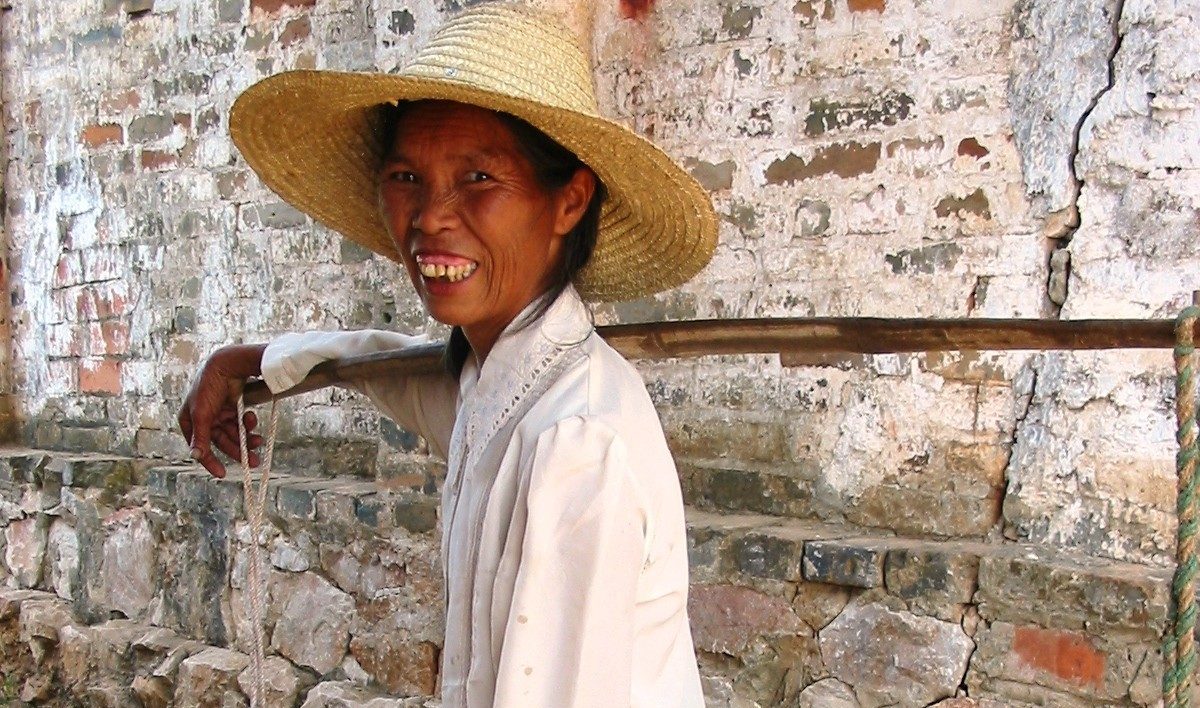(COMPLETED PROJECT – 2003)
As a region much in need; those living in the province of Guangxi, China daily face desperate conditions. Imagine a dirty community water hole where the same water is used for washing and cooking and bathing livestock. Life for the local villagers is a struggle for survival. The daily chores of fetching water, cooking meals, tending livestock, and maintaining the vegetable garden are very laborious and hard. Access is limited because of poor roads, making for very little economic development in these rural areas to begin with. The time and energy saved in carrying water will mean more time to spend farming in turn providing more money for future economic development.
In March 2003, William (Bill) Blaney, former CEO of Global Aid Network was able to visit Nanning City in the province of Guangxi, China and see these conditions first hand. His heart was moved as he left with an urgent desire to respond to the need for a clean, fresh source of water.
Through partnerships with local churches in Guangxi , GAiN Canada in partnership with New Life World Aid responded to the needs of the people in this region. Working in concert with each local village and with the support of the regional district several projects moved forward. These partnerships made a strong movement to bring “water for life” to the needy people of Guangxi.
The provision of clean drinking water is helping stop the cycle of water born diseases and illnesses. To begin this endeavor, GAiN Canada in partnership with New Life World Aid has identified three key projects to begin the process. With better health, the people of Guangxi will be stronger, able to work and have fewer needless deaths. With your prayers, they will come to experience God’s living water.
Water For Life Initiative – China Fulfillment
1. Potable Water Project-Lingpo Village
Isolated from water supply and road access, Lingpo Village is one of the poorest villages in the area. With a population of 585 people, the average annual income per person is a mere US$80. The area gets little rain, and any wells in existence are shallow, muddy and often dry up. The residents are using water from a fishpond to wash vegetables and dishes. The pond is replenished only by captured rainwater and is very unsanitary, with water buffalos also bathing here. The villagers must walk over four kilometers (one way) just to bring water to their homes.
A new well has already been built, located near the existing creek about 4 km from the village. Two water tanks were installed, one at the well and the other in the village. The water is piped from the first well directly to the water tower in the village. From there it is piped directly to each home. New Life World Aid and GAiN Canada are pleased to partner with the local government authorities and villagers to help break the cycle of disease and suffering caused by contaminated water.
2. Co-operative Medical Clinic Project-Lingpo Village
This basic medical / first-aid clinic will not only serve the Lingpo Village , but Liuhu Village as well, with a total client base of 2,642 persons . The present facility is in a state of disrepair, and lacks all essential equipment and supplies. Because of the great distance from the nearest hospital and poor road access, residents do not receive timely medical attention. Minor health problems or farming accidents could become life-threatening situations. Renovations are underway for the clinic with a new 60 sq ft building, medical equipment, supplies, medicines, and a filing system.
3. Water Well Project-Xintuan Village
The 980 residents of Xintuan Village have a longstanding struggle to supply their families, livestock and farmland with clean water. The only source of water is located 1 km away, a 100 year old well that only taps into a surface spring rather than aquifer. The well is also subjected to flooding and is contaminated for up to three months of the year.
On October 12, 2003 fresh water became available as construction of a new well, water pump station/tank and apipe system to each home was completed. The labour was provided by local villagers giving 105 households (over 900 people) clean water.

